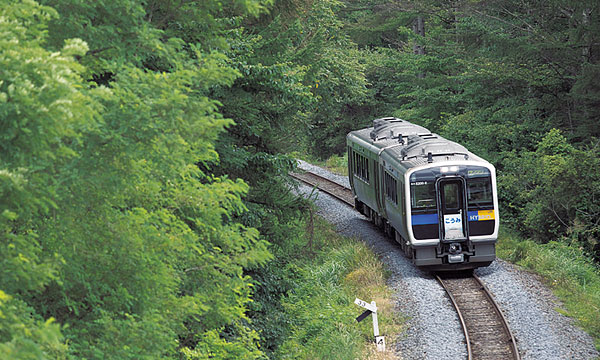Special Feature![]() Travel Japan by Train
Travel Japan by Train
Japan’s Railway Technology:
A Mix of Old and New
Japanese railways use a wide range of technologies, some developed in the age of steam, some futuristic. Which ones are used depends on the requirements of the specific situation. These two pages present four intriguing technologies: older techniques for safe rail travel in a land of steep mountains, and innovative railcars developed with the environment or cost-savings in mind.
Written by Takahashi Koki Photos by Hirota Izumi, Kawada Masahiro
Other photo credits: JR Hokkaido, Hakone Tozan Railway

The hybrid train Koumi reduces emissions along the track. It runs on the Koumi Line in Nagano and Yamanashi prefectures, and climbs to the highest elevation of any track in JR’s extensive network.
Quiet, eco-friendly hybrid
Koumi is the world’s first hybrid train to carry passengers on regular runs. JR East began operating it in July 2007 on the Koumi Line in the highlands of Nagano Prefecture. Its diesel engine generates electricity, which charges the batteries, which power the motor. The engine is quiet and the train is easy to control and maintain, but best of all it uses less energy. When the brakes are applied the engine stops working, and the braking energy is converted into electricity to give the batteries an extra charge. Compared to a conventional train with the same configuration, the energy savings are theoretically 20%, in practice 10%. The hybrid also emits far fewer noxious pollutants. JR East plans to take eco-friendly rail transport a step further, by developing a vehicle powered by fuel cells using hydrogen, which emit no pollution at all when used.